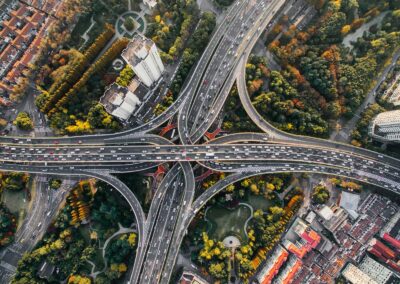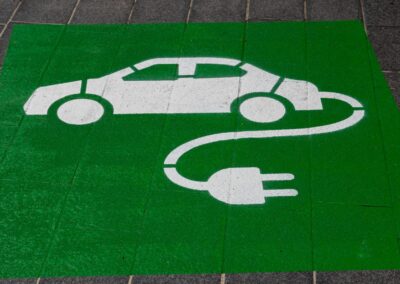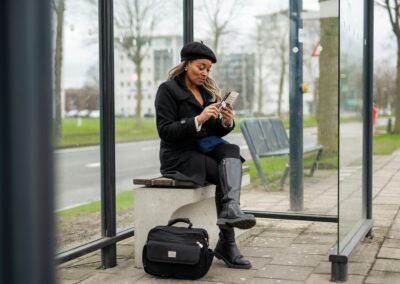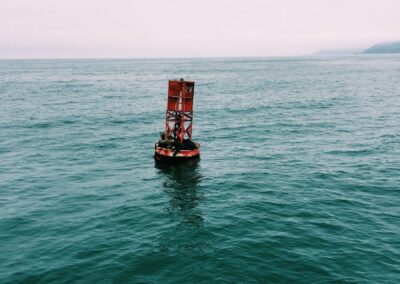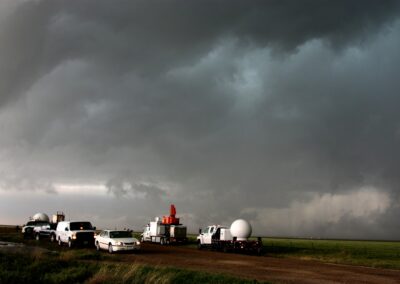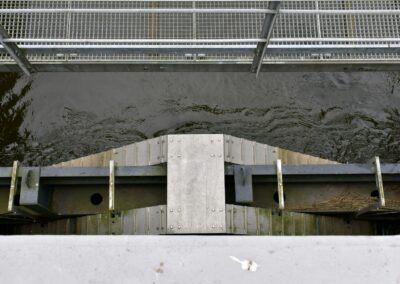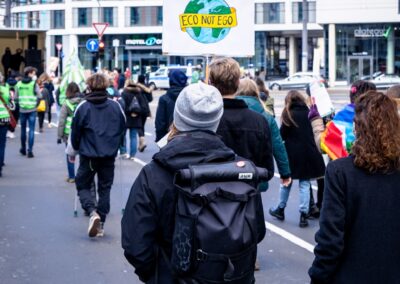Leveraging Digital Twins for Advanced Climate Change Solutions
Transforming Environmental Sustainability with Digital Twins
Digital twins are emerging as a revolutionary tool in the realm of climate change mitigation and environmental sustainability. By creating virtual replicas of physical systems, digital twins allow for the simulation and analysis of various environmental scenarios, which is crucial for developing effective strategies to combat climate change. This innovative technology offers a profound impact on how cities manage their environmental resources and plan for future sustainability.
In Saudi Arabia and the UAE, where rapid urbanization and extreme weather conditions pose significant challenges, digital twins provide valuable insights into environmental systems. For example, these virtual models can simulate the effects of different climate scenarios on urban infrastructure, helping city planners anticipate and prepare for potential risks. This proactive approach not only improves resilience but also aligns with broader sustainability goals, such as reducing carbon footprints and enhancing energy efficiency.
Furthermore, digital twins enable cities to monitor and manage environmental factors in real-time. By integrating data from sensors and other monitoring tools, these virtual models offer a comprehensive view of factors like air quality, water usage, and energy consumption. This capability allows for timely interventions and adjustments, ensuring that environmental sustainability initiatives are effectively implemented and continuously optimized.
Enhancing Climate Change Resilience with Real-Time Data
One of the key advantages of using digital twins for climate change mitigation is their ability to provide real-time data and simulations. This dynamic approach enables city officials and environmental managers to visualize and respond to changes in environmental conditions as they occur. For instance, during extreme weather events, digital twins can simulate the impact on infrastructure and natural systems, helping to develop strategies for damage control and recovery.
In cities like Riyadh and Dubai, where the effects of climate change are increasingly evident, digital twins offer a critical tool for enhancing resilience. By analyzing data from various sources, these virtual models can predict potential vulnerabilities and guide the implementation of adaptive measures. This real-time capability ensures that cities can swiftly address emerging issues and minimize the impact of climate-related disruptions.
Moreover, digital twins facilitate scenario planning and risk assessment, allowing for the exploration of various mitigation strategies and their potential outcomes. This strategic approach helps stakeholders make informed decisions and prioritize actions that will have the greatest positive impact on environmental sustainability. For business executives and policymakers, this data-driven insight is invaluable for developing long-term plans and achieving sustainability objectives.
Optimizing Resource Management and Urban Planning
Digital twins play a crucial role in optimizing resource management and urban planning, both of which are essential for addressing climate change. By simulating different scenarios, digital twins can help cities identify opportunities for improving resource efficiency and reducing environmental impact. This optimization extends to areas such as energy usage, water management, and waste reduction, all of which are critical for achieving sustainability goals.
In the context of urban planning, digital twins provide a powerful tool for designing and implementing green infrastructure projects. By visualizing the potential benefits and challenges of different design options, city planners can make more informed decisions and ensure that new developments align with environmental sustainability objectives. This approach not only enhances the quality of urban spaces but also contributes to the overall well-being of residents.
Additionally, digital twins support collaboration among various stakeholders, including government agencies, businesses, and community organizations. By providing a shared platform for data analysis and decision-making, these virtual models facilitate coordinated efforts to address climate change and implement sustainability initiatives. This collaborative approach ensures that all parties are working towards common goals and leveraging their collective expertise to achieve meaningful results.
Conclusion: Embracing Digital Twins for a Sustainable Future
The use of digital twins for climate change mitigation and environmental sustainability represents a significant advancement in how cities address environmental challenges. By offering real-time data, simulation capabilities, and optimization tools, digital twins enable more effective and proactive approaches to managing climate change and promoting sustainability.
For cities in Saudi Arabia, the UAE, and other rapidly developing regions, embracing digital twins is a strategic move towards a more resilient and sustainable future. These virtual models not only enhance the ability to respond to environmental changes but also support long-term planning and resource management efforts.
In conclusion, digital twins are poised to play a pivotal role in shaping the future of climate change mitigation and environmental sustainability. By leveraging this technology, cities can address the complexities of climate change, optimize resource use, and ensure a more sustainable urban environment for future generations.
—
#DigitalTwins #ClimateChangeMitigation #EnvironmentalSustainability #SmartCities #SaudiArabia #UAE #Riyadh #Dubai #ArtificialIntelligence #ModernTechnology #BusinessSuccess #LeadershipAndManagement #ProjectManagement





